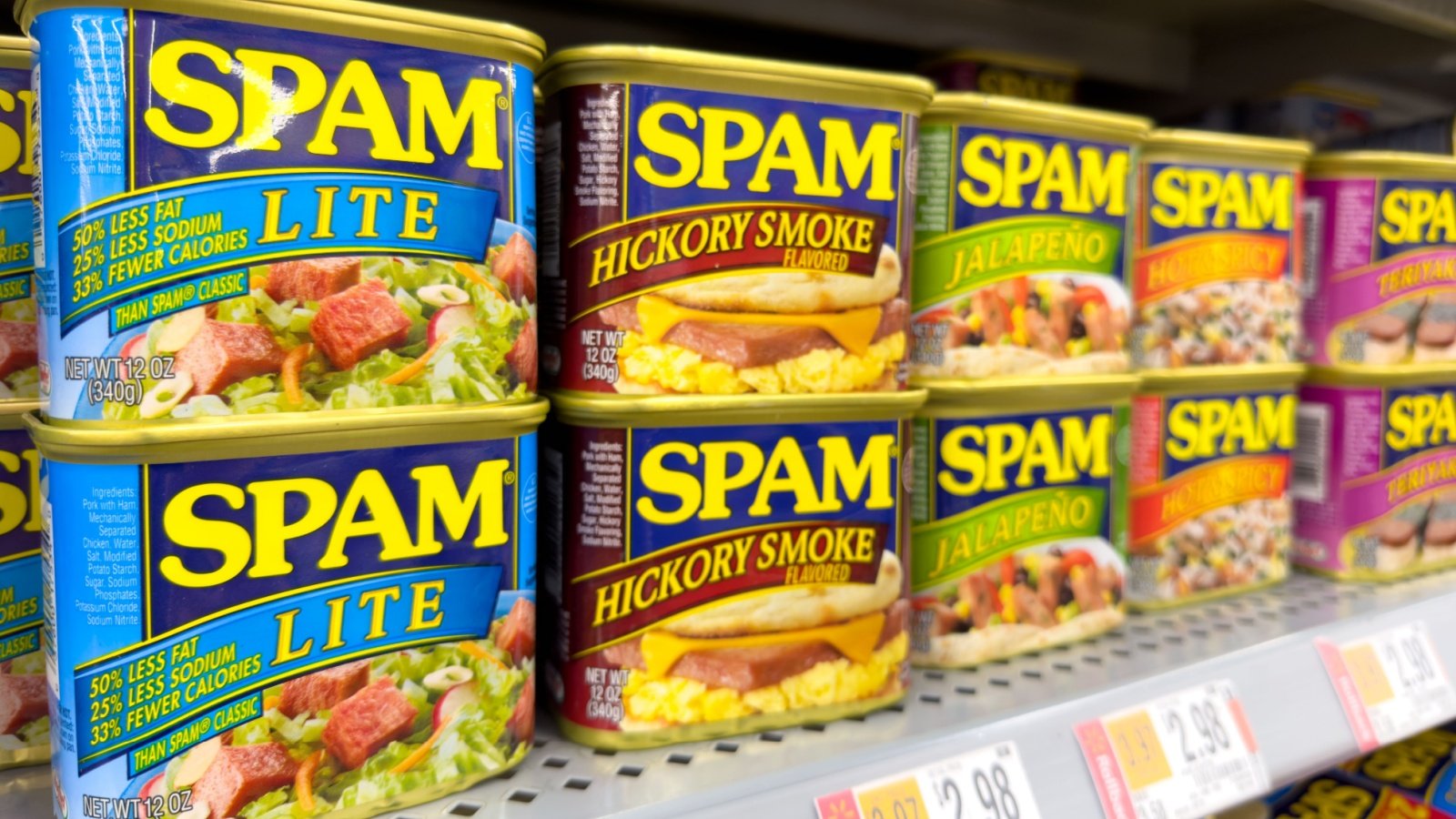Spam, the iconic canned meat, has become a global phenomenon since its introduction in 1937.
There are several important things you should know about this precooked, vacuum-sealed, spiced pork wonder. Some facts may surprise you, some may intrigue you, and some may provide more information than you ever wanted to know about canned meat.
Take a moment to discover the lesser-known aspects of Spam as we dig deep into the history and culture surrounding these 12-ounce packages of savory delight. You might just be impressed.
Origin Story

The mighty Spam was introduced in 1937 as an affordable protein option during America’s Great Depression. This canned meat helped families stretch their food budgets while still providing necessary nutrients. Its creation by Hormel Foods marked a significant advancement in food preservation technology.
World War II Staple

During the terrors of World War II, Spam became an essential part of soldiers’ rations for American and Allied forces. Over 150 million pounds were shipped overseas to feed troops, ensuring a reliable protein source in harsh conditions. It was introduced to various cultures during the war.
Global Reach Expands

Spam is popular in over 44 countries, each incorporating it into traditional dishes in unique ways. In South Korea, it’s considered a desirable gift during the Lunar New Year. The brand’s versatility has made it a global staple.
Annual Sales Volume

Spam sells over 122 million cans globally each year. Its popularity is sustained by its modern marketing strategies. The product remains a go-to for easy, protein-rich meals in many households.
Hawaii’s Love Affair

In Hawaii, Spam is a cultural icon. Locals consume nearly 7 million cans of Spam annually, leading the United States in per capita consumption. The annual “Spam Jam” festival in Waikiki celebrates this beloved meat with music, dance, and inventive Spam dishes.
Varieties of Spam

There are 15 different varieties of Spam, ranging from classic to jalapeño to teriyaki. This diversification caters to a wide range of palates and culinary traditions around the world. Each variety offers a unique twist on the original flavor, keeping the brand relevant and exciting.
Secret Recipe

The exact recipe and the method of Spam’s creation remain a closely guarded secret of Hormel Foods. Only a few people know the precise blend of spices used, adding a mystique to its simple list of six ingredients.
Museum Tribute

Austin, Minnesota, is home to the Spam Museum, an attraction dedicated entirely to celebrating this iconic canned meat. The museum offers interactive exhibits, history lessons, and even cooking demonstrations. It attracts thousands of visitors each year.
Space Travel Food

Spam has even traveled to space with astronauts on the Space Shuttle. Its shelf-stable properties make it an ideal food for space travel. This is a testament to its versatility and enduring appeal.
Pop Culture

Spam has been featured in numerous TV shows and movies, often as a humorous element. Its mention in Monty Python’s Flying Circus led to the term “spam” being used to describe unsolicited electronic messages.
Nutrition

A single can of Spam contains 1080 calories, providing substantial energy in compact form. It also offers 96 grams of fat and 240 milligrams of cholesterol, making it a controversial choice among health-conscious consumers. Despite this, it remains a valued emergency food.
Advertising Shifts

Originally marketed as a “miracle meat,” Spam’s advertising has evolved significantly. Modern campaigns focus on convenience and versatility rather than mere sustenance. This shift reflects changing consumer values and a more health-conscious public.
Accessibility

Spam continues to be an economically accessible source of protein worldwide. Its affordability is particularly crucial in areas facing economic hardship. This accessibility has helped maintain its popularity among diverse economic demographics.
Limited Edition Flavors

Hormel occasionally releases limited edition flavors to spark interest and excitement. These have included pumpkin spice and black pepper versions. Collectors and fans often scramble to find these rare cans, adding to the brand’s cult-like following.
The Name

The name “Spam” is believed to be a portmanteau of “spiced ham.” However, some argue it was the result of a naming contest held by the company. The true origin of the name adds to the overall mystique of the product.
Environmental Impact

Spam’s production is linked to significant environmental impacts, including resource-intensive meat processing. Hormel Foods has made commitments to sustainable practices, but challenges remain. The company continues to address these issues as part of its corporate responsibility.
Slogans

Over the decades, Spam has been promoted through catchy slogans like “Cold or Hot, Spam hits the spot.” These slogans have effectively reinforced its image as a versatile and indispensable kitchen staple.
Recipes

The internet has given rise to countless Spam-based recipes, from traditional to wildly creative. Food bloggers and home cooks experiment with Spam in dishes like sushi, burgers, and even desserts.
Endorsements

Spam has been endorsed by various celebrities over the years, enhancing its image and appeal. These endorsements help bridge the gap between its reputation as a budget food and a culturally iconic product. Celebrity chefs have also featured Spam in gourmet recipes, elevating its status.
Recessions

During economic downturns, Spam sales typically increase as families revert to more cost-effective food options. Its role during the recent global economic crises underscores its importance as a staple food. The product’s resilience in the market reflects its value.
Legal Battles

Spam has been at the center of various legal battles concerning its trademark and brand identity. Hormel fiercely protects its brand, challenging the use of the name “spam” in contexts that could harm its image. These legal efforts ensure that the Spam brand remains distinctive.








